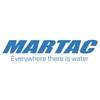Last week the International Maritime Organization came a step closer in the completion of the long awaited international Convention on the control of Harmful Organisms in Ships' Ballast Water. Intertanko participated at the specially convened meeting of the Ballast Water Working Group where over 180 delegates representing member states and NGOs upheld the IMO's spirit of compromise in discussing and agreeing on some of the main principles of this difficult Convention.
The nature of the ballast water problem has meant that new ground has had to be broken by the IMO in taking into account absolute levels of control to ensure effective regulations which would cope with the science of biology - past Conventions have mainly focused on the chemical and physical aspects of marine pollution. Much of the discussions focused on the application to new and existing vessels of the standard at which ballast water should be treated. A strong commitment by the delegates to ensure that environmental concerns regarding this subject were approached with due consideration for the practicalities of the industry saw a positive return in terms of a more practical and workable regulatory structure.
One of the most significant aspects of the Convention is the ballast water treatment standard. It was agreed last week that this would be based on a size criteria in which organisms above 50microns would be removed from the ballast water. The eventual aim would be to remove, kill or inactivate all the organisms in the ballast water. Understanding that the standard currently agreed is still not achievable on all vessel types the Convention allows for a review of the standard and its applicability two years prior to any enforcement, i.e. two years prior to the date upon which a vessel has to comply with the Convention. A feasibility study will be instigated to assess the viability of the technology available and its applicability to the ships intending to use it.
Ballast water exchange is widely used by a number of vessels and as such remains an option for existing ships. This was in the face of a strong lobby to remove this option on environmental grounds, i.e. there were concerns that ballast exchange is not very effective in removing the organisms and as such was not acceptable as a treatment option by some states. However, given the lack of a viable alternative it was agreed to maintain this option until technology was available to replace it on existing ships. This was seen as crucial taking into account the number of newer ships and new buildings which are incorporating extra pumping and piping work, at a cost, to facilitate ballast exchange.
A further breakthrough was the inclusion of an exemption clause for vessels which are participating in research and development schemes, such as those within the MARTOB project. This is intended to encourage owners and operators to participate in trial schemes which may not quite meet the standard in the long run but will further the development of treatment systems and hence the eventual applicability of the technology to the world's fleet.
IMO's Marine Environment Protection Committee (MEPC) will now convene a drafting group at its next session in July this year. This will further refine the text in time for a Diplomatic Conference to adopt the Convention in spring 2004. Intertanko's Environmental Committee will be assessing the changes made to the Convention text during last week's meeting and ensuring that any further aspects are taken into account at the MEPC meeting in July.
Source: Intertanko
Sponsored Content
Protect Your Crew. Exceed Weld Standards.

MSC Sets a New Standard for Time Off in 2025, Plus Earn a $44,345 Bonus as an Able Seaman!

August 2025
 Read the Magazine
Read the Magazine

 Read the Magazine
Read the Magazine
This issue sponsored by:

Corn Belt Ports: Connecting America’s Heartland to Global Markets
Subscribe for
Maritime Reporter E-News
Maritime Reporter E-News is the maritime industry's largest circulation and most authoritative ENews Service, delivered to your Email five times per week








